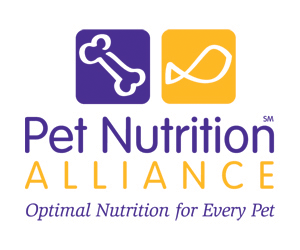Alliance seeks to offer insight into pet nutrition
 The Pet Nutrition Alliance aims to become the go-to source for “nonbranded” information on pet nutrition, independent of manufacturers.
The Pet Nutrition Alliance aims to become the go-to source for “nonbranded” information on pet nutrition, independent of manufacturers.
The PNA—consisting of the American Animal Hospital Association, the AVMA, and other veterinary associations—already offers resources on nutrition for veterinarians and organizes sessions at veterinary conferences. A day of sessions on the practical application of nutrition drew a crowd of practitioners during the AAHA conference in March.
“Clients are craving information, and what I know is that it’s really a quagmire,” said Dr. Julie Churchill, speaker for the sessions and director of nutrition services at the University of Minnesota College of Veterinary Medicine. “You guys have busy, busy, busy jobs. Keeping up with 5,000 different pet foods is mind-boggling.”
Dr. Churchill is a member of the PNA committee developing tools to offer nonbranded nutritional information. She spoke in one session about how to evaluate pet foods to make the best recommendations, particularly by looking at labels.
 Clients are reading the labels on pet food, Dr. Churchill said. The AAHA nutrition guidelines can help veterinarians make sense of that information.
Clients are reading the labels on pet food, Dr. Churchill said. The AAHA nutrition guidelines can help veterinarians make sense of that information.
The nutritional adequacy statement indicates whether a diet is complete and balanced, supplying everything essential in the right proportions. Dr. Churchill said processed foods for people tend to provide taste and convenience, but foods are processed for pets to provide a complete and balanced diet.
The same statement on the label indicates whether the manufacturer of the pet food determined the nutritional adequacy of the diet through a mathematical or chemical analysis or a feeding trial. Dr. Churchill prefers the latter.
The statement also specifies the life stages for which a pet food is complete and balanced. A maintenance diet is basically an adult diet. Some diets are for growth or reproduction. A diet for all life stages includes growth and reproduction, so it is usually higher in calories than a maintenance diet. The definitions of senior or geriatric diets vary by manufacturer.
The AAHA nutrition guidelines suggest contacting manufacturers with concerns or questions, such as questions about the calories in a diet. Dr. Churchill noted that the feeding guidelines on labels are just a starting point because of individual variation in pets.
Ingredients are simply the means to nutrients, Dr. Churchill continued. The ingredient list is not a high priority for her, but clients ask a lot of questions about certain ingredients such as grains. The PNA tools committee will offer information about ingredients in regard to the nutrients they provide.
“The body recognizes food by the nutrients,” Dr. Churchill said. “Grains are as biologically appropriate as any other carbohydrate.”
The PNA advocates for every pet to receive a nutritional assessment at every veterinary visit.
“Food is medicine. We’ve kind of forgotten that,” said Dr. Kate Knutson, AAHA president and PNA chair. “It’s an area we’ve abdicated or given away to people with less knowledge than we have ourselves.”
She added, “It’s very complicated, but we as a hospital or a clinic need to be able to explain it to our clients.”
